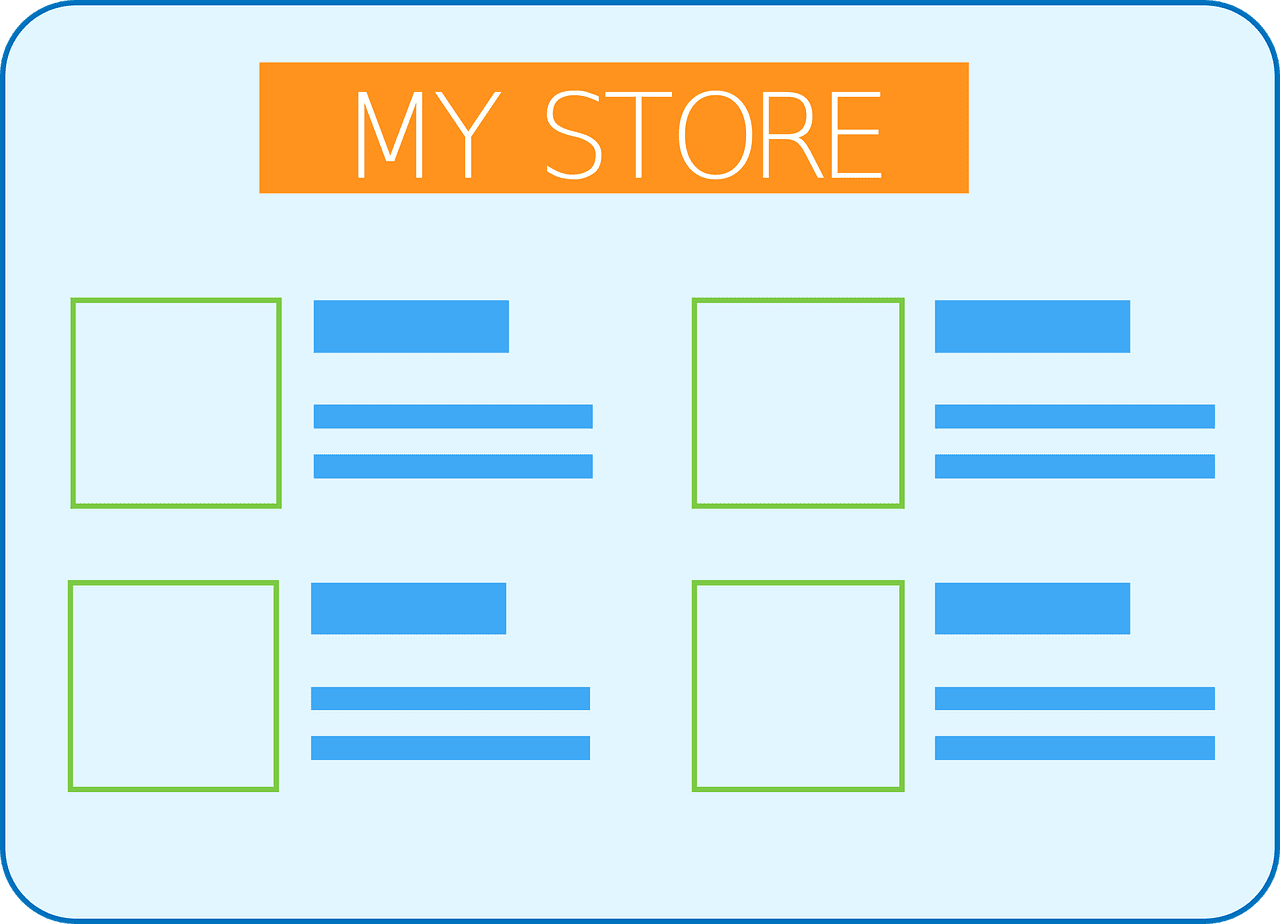Disclosure:
Some of the links on this website are affiliate links, which means that if you click on one of the links and sign up or make a purchase, we may earn a small commission at no additional cost to you. This commission helps support the maintenance and operation of this site.
We only recommend products or services that we believe will provide value to our readers. Our opinions and recommendations are based on our own research and experiences, and we strive to offer honest and unbiased content.
Please note that your support through these affiliate links is greatly appreciated, as it helps us continue to provide quality content and resources.
Thank you for your support!
The world of online business and blogging continues to evolve, with new and emerging trends shaping the way entrepreneurs can make money online. A niche refers to a specialized segment of the market that caters to a specific audience’s interests or needs. Identifying and focusing on the right niche is crucial to building a profitable business or blog, as it allows you to target a smaller, more engaged audience that’s likely to convert into loyal customers.
The key to success in choosing a niche lies in finding a balance between demand, competition, and personal interest. By selecting a niche that is growing in popularity, you can position yourself as an authority in that space while tapping into a lucrative market. Several niches are gaining traction across various industries, driven by shifting consumer preferences, technological advancements, and a focus on sustainability and personalization.
How You Can Use Niches to Make Money Online
Once you’ve identified a niche, there are multiple ways to monetize it. Whether through e-commerce, blogging, affiliate marketing, or offering digital products or services, you can leverage your niche to create a sustainable income. Some common methods include:
- Selling Physical Products: Create an online store print on demand or dropshipping business that offers niche-specific products (e.g., sustainable kitchenware, pet accessories).
- Affiliate Marketing: Promote products or services in your niche through your blog, social media, or email marketing, earning commissions on every sale made through your referral links.
- Digital Products and Courses: Develop e-books, guides, or online courses related to your niche. For example, if your niche is fitness, you can offer personalized workout plans or fitness coaching programs.
- Subscription Services: Offer subscription-based products, such as monthly boxes filled with niche-specific items (e.g., vegan snacks or beauty products) or access to premium content or services.
- Sponsored Content and Advertising: Once your blog or online platform gains traffic, you can monetize it by offering sponsored posts or displaying ads, particularly if you become an influencer within your niche.
By focusing on trending niches, you position yourself ahead of the curve, catering to emerging consumer needs. This allows you to build a loyal audience, establish authority in your field, and create a profitable online business or blog in the process.
Here’s a list of popular and trending blogging and e-commerce niches for 2024, including ideas for products and services to offer within each category:
- Sustainable Products
- Description: As environmental consciousness grows, sustainability is a hot topic. This niche focuses on eco-friendly, biodegradable, and ethically sourced products.
- Products & Services:
- Reusable bags, water bottles, bamboo toothbrushes
- Solar-powered gadgets and appliances
- Recycled clothing or furniture
- Subscription boxes for eco-friendly products (e.g., cleaning supplies)
- Real-world Example: Companies like EcoRoots offer zero-waste, plastic-free products.

- Personalized Items
- Description: Customization has become increasingly popular as people seek unique and memorable gifts.
- Products & Services:
- Custom t-shirts, mugs, and jewelry
- Personalized wall art or engraved keepsakes
- Subscription boxes with customized products based on personal preferences
- Real-world Example: Etsy, a platform for personalized and handmade items.
- Subscriptions
- Description: Subscription-based businesses are booming, as they provide consistent revenue and deliver convenience to customers.
- Products & Services:
- Subscription boxes for niche interests (books, fitness gear, snacks)
- Digital subscriptions for software or cloud services
- Memberships for online courses or learning platforms
- Real-world Example: Spotify, a music and podcast subscription service.
- Pets
- Description: The pet industry continues to thrive, and people are willing to invest in quality products for their pets.
- Products & Services:
- Gourmet pet food, CBD treats
- Pet grooming tools, eco-friendly toys, and accessories
- Pet health supplements
- Subscription boxes for monthly pet treats and toys
- Real-world Example: BarkBox, which offers pet subscription boxes for dogs.
- Fashion
- Description: Fashion is a timeless niche, and current trends lean toward sustainability, comfort, and affordability.
- Products & Services:
- Sustainable clothing, or ethical fashion brands
- Custom-made clothing or subscription styling services
- Upcycled or vintage apparel
- Real-world Example: ThredUp, an online thrift store for secondhand clothing.
- Fitness
- Description: Fitness has gained immense popularity with trends like home workouts, personal fitness coaching, and wearables.
- Products & Services:
- Fitness equipment (resistance bands, yoga mats, smart fitness trackers)
- Digital fitness programs or virtual personal training
- Supplements like protein powder and vitamins
- Real-world Example: Peloton, which provides fitness classes and smart exercise bikes.
- Food
- Description: The food niche offers a wide range of possibilities, from gourmet recipes to health-focused products.
- Products & Services:
- Meal kits, organic food products, or cooking ingredients
- Niche products like vegan, keto, or gluten-free snacks
- Subscription boxes for food lovers (artisan coffee, gourmet snacks)
- Real-world Example: HelloFresh, a meal kit delivery service.

- Health and Wellness
- Description: With growing health awareness, people are investing more in their well-being, creating opportunities for both physical and mental health products.
- Products & Services:
- Vitamins, supplements, and herbal remedies
- Mental wellness programs, meditation apps
- Online fitness coaching and health trackers
- Real-world Example: Noom, a weight loss app that combines psychology and health.
- Home Decor
- Description: Home decor is a large market, especially with the growing trend of home improvement and personalization.
- Products & Services:
- Wall art, throw pillows, rugs, and furniture
- Eco-friendly and minimalistic decor products
- Smart home devices like lighting systems or security cameras
- Real-world Example: Wayfair, an online retailer specializing in home goods.
- Kitchenware
- Description: With more people cooking at home, kitchenware has become a popular niche.
- Products & Services:
- Specialty cookware (air fryers, sous vide machines, cast iron skillets)
- Unique kitchen gadgets and utensils
- Subscription services for gourmet spices or specialty ingredients
- Real-world Example: Our Place, a direct-to-consumer kitchenware brand.
- Office Products
- Description: With remote and hybrid work environments continuing to grow, the demand for innovative office supplies is increasing.
- Products & Services:
- Ergonomic office chairs, standing desks, and desk organizers
- Productivity apps or software for remote workers
- Personalized office supplies (custom notebooks, planners)
- Real-world Example: Ergotron, a company specializing in ergonomic office solutions.
- Electronic Accessories
- Description: The rise of digital devices creates a constant need for accessories that enhance their functionality.
- Products & Services:
- Phone cases, chargers, wireless earbuds
- Smartwatches, fitness bands, or screen protectors
- Accessories for gaming consoles, like controllers or headsets
- Real-world Example: Casetify, which sells custom-designed phone cases and other tech accessories.
- Technology and Gadgets
- Description: Technology continues to evolve, and there’s always a market for the latest gadgets and innovations.
- Products & Services:
- Smart home devices (thermostats, voice assistants, smart plugs)
- Wearable tech (smartwatches, health trackers)
- Cutting-edge devices like drones or VR headsets
- Real-world Example: Amazon, which offers a range of tech and smart home gadgets.

- Outdoor and Adventure Gear
- Description: More people are embracing outdoor activities, leading to a growing market for gear and apparel.
- Products & Services:
- Hiking, camping gear, and adventure travel accessories
- High-performance outdoor clothing or eco-friendly gear
- Survival kits or adventure travel guides
- Real-world Example: REI, an outdoor recreation retailer.
- Gaming and eSports
- Description: The gaming industry continues to grow exponentially, with a rising demand for both physical and digital products.
- Products & Services:
- Gaming accessories (keyboards, chairs, consoles)
- Streaming equipment for eSports players
- Subscription services for game updates, tournaments, or exclusive content
- Real-world Example: Razer, which sells gaming hardware and accessories.
- Digital Marketing Services
- Description: As more businesses shift online, they need help with marketing their products and services.
- Products & Services:
- SEO consulting, content creation, and social media management
- Email marketing services or digital ad management
- Courses and workshops on digital marketing strategies
- Real-world Example: HubSpot, offering inbound marketing, sales, and customer service software.
- Home Fitness Equipment
- Description: With a continued emphasis on fitness at home, there’s a strong demand for home fitness products.
- Products & Services:
- Compact home gym systems (resistance bands, dumbbells, kettlebells)
- High-tech fitness equipment (smart treadmills, stationary bikes)
- Fitness subscription services (on-demand classes, virtual personal training)
- Real-world Example: Mirror, a smart home gym system that streams fitness classes.
- Luxury Goods and High-End Fashion
- Description: Despite economic uncertainty, the luxury market continues to grow as consumers seek exclusive, high-end items.
- Products & Services:
- Designer clothing, handbags, and watches
- Fine jewelry, limited-edition sneakers, or exclusive collaborations
- Curated luxury subscription boxes (high-end grooming products, fashion pieces)
- Real-world Example: Net-a-Porter, an online luxury fashion retailer.
- Minimalist and Zero-Waste Living
- Description: Minimalism and zero-waste lifestyles are growing as more people seek to reduce clutter and their environmental impact.
- Products & Services:
- Minimalist furniture, reusable household items (straws, cloth napkins)
- Zero-waste kitchen supplies (reusable wraps, containers)
- Online courses or guides on how to live a minimalist lifestyle
- Real-world Example: Package Free, a zero-waste store that sells sustainable alternatives.

Bonus Niches
- Travel and Experience-Based Gifts
- Description: With more focus on experiences over material goods, gifting travel experiences or adventure packages is becoming popular.
- Products & Services:
- Adventure travel packages, unique hotel stays, and curated experiences
- Subscription services for travel experiences (wine tours, cooking classes)
- Personalized travel planning services or travel journals
- Real-world Example: Airbnb Experiences, which offers unique activities led by local hosts.
- Online Education and E-Learning
- Description: The demand for online education has skyrocketed, with people seeking skill-based learning opportunities.
- Products & Services:
- E-learning platforms and online courses (coding, graphic design, business management)
- Subscription-based learning services (language learning, tech skills)
- Educational webinars and virtual workshops
- Real-world Example: Udemy, an online learning platform offering a wide range of courses.
- Educational Toys and Learning Tools
- Description: As more parents focus on their children’s early education, the market for educational toys and tools has grown significantly.
- Products & Services:
- STEM toys, interactive books, and language learning tools
- Subscription boxes with educational kits for different age groups
- Online courses or learning resources for parents and teachers
- Real-world Example: KiwiCo, which offers educational kits for kids of all ages.
- Parenting and Baby Products
- Description: Parents are always on the lookout for products that make parenting easier and safer.
- Products & Services:
- Organic baby food, diapers, and eco-friendly toys
- Parenting coaching, baby sleep guides
- Subscription boxes for new parents (baby clothing, toys)
- Real-world Example: The Honest Company, specializing in eco-friendly baby products.
- Men’s Grooming and Self-Care
- Description: The men’s grooming and self-care market is expanding, with a growing focus on skincare, beard care, and wellness.
- Products & Services:
- Beard oils, shaving kits, and skincare products for men
- Grooming subscription boxes (razors, skincare essentials)
- Online tutorials and content focused on men’s grooming and wellness
- Real-world Example: Dollar Shave Club, offering subscription-based grooming products.
- 3D Printing and Customization
- Description: 3D printing technology is becoming more accessible, allowing for a range of customizable products and services.
- Products & Services:
- Custom 3D-printed home decor, jewelry, or fashion accessories
- 3D-printed prototypes for businesses and individuals
- Subscription services for 3D printing designs or tools
- Real-world Example: Shapeways, a company that allows users to create and print custom 3D products.

The business landscape continues to shift as consumers prioritize sustainability, personalization, convenience, and digital experiences. By focusing on popular and trending niches, you have the opportunity to tap into evolving market demands and build a successful online presence. Whether you choose to venture into eco-friendly products, health and wellness, technology and gadgets, or personalized services, each niche offers distinct possibilities for growth and profitability.
Monetizing these niches through methods such as e-commerce, blogging, affiliate marketing, or subscription services can help you create a diverse income stream. The key to success lies in understanding your audience, delivering high-quality products or services, and staying attuned to trends as they evolve. By capitalizing on these emerging opportunities, you can position your business for long-term success and create a brand that resonates with today’s consumers.
Seize these opportunities, leverage your passions, and build a thriving business in an ever-changing digital landscape.
FAQ:
1. What is a niche, and why is it important for online business?
A niche is a specialized segment of a larger market that caters to a specific group of people with particular interests or needs. It’s important because it helps businesses target a more focused audience, making marketing more effective and increasing the chances of attracting loyal customers. By narrowing your focus, you can position yourself as an expert, reducing competition and improving profitability.
2. How do I choose the right niche for my business?
Choosing the right niche involves balancing your personal interests, market demand, and competition. Start by identifying your passions or skills, research market trends to ensure there’s growing demand, and assess the level of competition in that space. The ideal niche is one where you can offer unique value to a specific audience that is underserved or has unmet needs.
3. Which niches are the most profitable in 2024?
Some of the most profitable niches in 2024 include:
- Sustainable products (eco-friendly goods)
- Health and fitness (home fitness equipment, wellness)
- Technology and gadgets (smart home devices, wearables)
- Personalized products (custom gifts, fashion)
- Subscriptions (monthly boxes, digital services)
These niches reflect the growing consumer focus on sustainability, convenience, and digital innovation.
4. How can I make money from a niche market?
There are several ways to make money from a niche market:
- E-commerce: Sell niche-specific physical products through an online store, print on demand or dropshipping.
- Affiliate marketing: Promote products or services in your niche and earn commissions from sales through referral links.
- Digital products: Offer e-books, online courses, or guides related to your niche expertise.
- Subscription services: Provide monthly subscription boxes or memberships for exclusive content or products.
- Advertising and sponsorships: Once you build traffic or influence, offer sponsored content and ad placements.
5. How can I keep up with niche trends in 2024?
To stay current with niche trends, regularly follow industry blogs, attend webinars, join niche-related social media groups, and subscribe to relevant newsletters. It’s also useful to track consumer behavior through tools like Google Trends, keyword research, and customer feedback to understand what’s gaining traction.
6. What are some examples of products I can sell in trending niches?
Here are some examples:
- Sustainable products: Reusable bags, solar-powered gadgets, eco-friendly fashion.
- Fitness: Resistance bands, fitness trackers, home gym equipment.
- Tech and gadgets: Smartwatches, drones, wireless chargers.
- Personalized items: Custom clothing, engraved gifts, personalized phone cases.
- Subscriptions: Monthly fitness gear, gourmet snacks, digital learning memberships.
These are just a few examples, and each niche provides various ways to monetize based on consumer demand.
7. Can I combine multiple niches into one business?
Yes, combining multiple niches can create a unique business model that appeals to a broader yet still targeted audience. For instance, you could combine sustainability with fashion to sell eco-friendly clothing or merge fitness and tech by offering smart fitness gadgets. Just ensure that the niches complement each other and align with a cohesive brand strategy.
8. Are subscription services still profitable in 2024?
Yes, subscription services continue to be a profitable and growing business model in 2024. Consumers love the convenience and novelty of receiving curated products or exclusive content on a regular basis. Popular subscription models include niche-specific boxes (e.g., pet supplies, vegan snacks) or digital services (e.g., fitness classes, software tools). The recurring revenue model also helps build long-term customer relationships.
9. What are some emerging niches to explore in 2024?
In addition to established niches, emerging trends in 2024 include:
- Mental wellness: Meditation apps, self-care products, mindfulness resources.
- Digital art and NFTs: Platforms for buying and selling non-fungible tokens.
- RV and van life: Products and services for nomadic living and travel.
- Online education: E-learning platforms and skill-based courses.
- Men’s grooming: Skincare, shaving kits, and self-care products designed for men.
These niches reflect consumer preferences for health, digital experiences, and lifestyle flexibility.
10. How long does it take to see success in a niche business?
Success in a niche business varies based on your niche, strategy, and effort. On average, it may take 6-12 months to see significant results, especially if you’re building an audience or traffic for the first time. However, by focusing on content creation, targeted marketing, and consistent engagement, you can accelerate your growth and start seeing profit sooner.
By choosing the right niche and executing a clear business strategy, you can build a profitable and sustainable online business in 2024.
Check out our articles on how to start a blog and how to create an E-commerce business.
Subscribe to our Newsletter for Posts, Updates and More.

























Leave a Reply